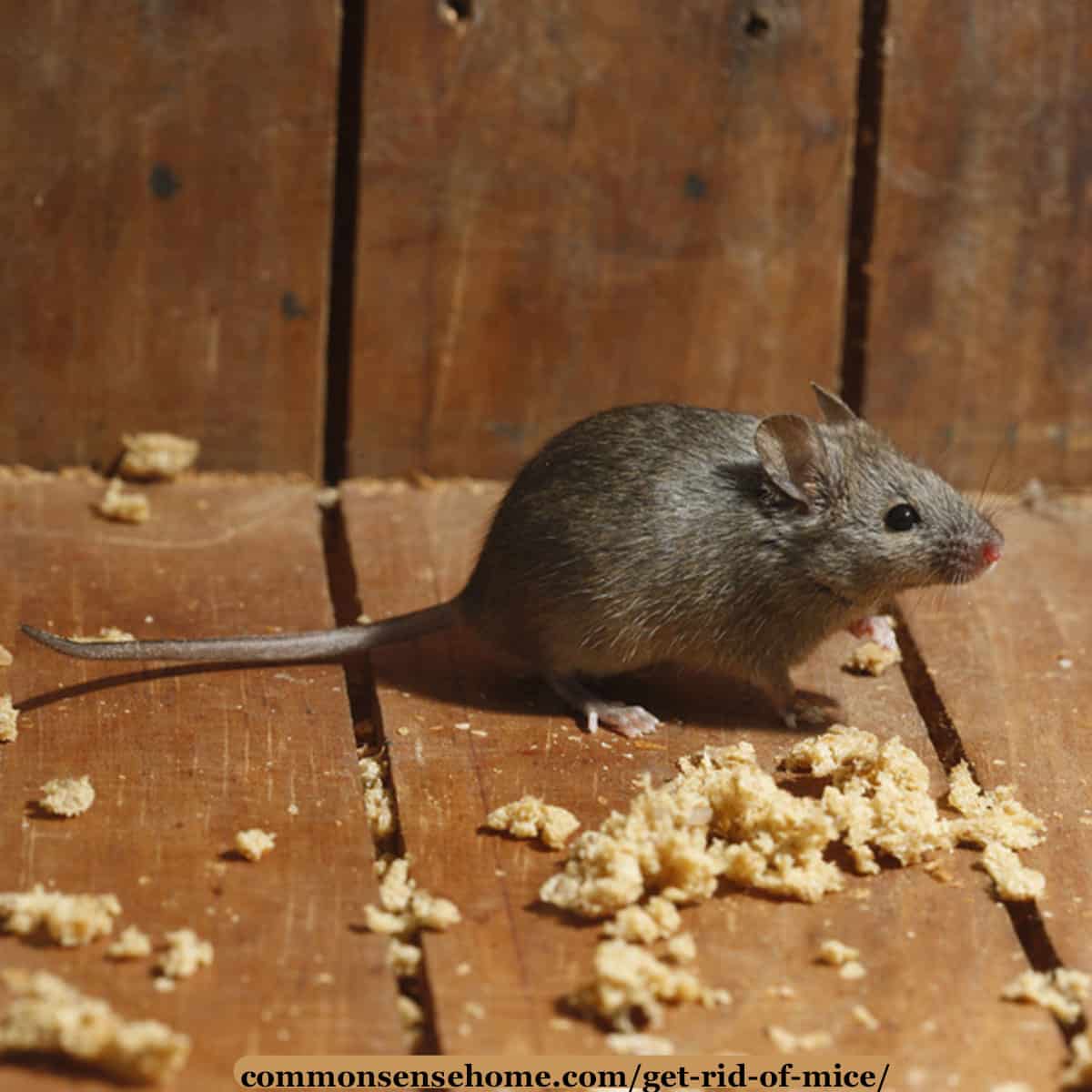Table Of Content

Proofing all means of entry as much as possible will help to prevent an infestation. Juveniles are greyer overall, still with larger ears, hind feet and tails than house mice. And keep those pegs handy - they have a really distinctive, strong smell so you’ll know if you have a large infestation of these unwanted guests. Electric cables, water and gas pipes, packaging and woodwork may all be seriously damaged by mice - many instances of electrical fires and floods have been attributed to them. Active all year round, mice are one of the most common pest species in the UK. The best way to prevent mice is to keep them from feeling welcome inside or outside your home.
You might have mice in your home without knowing it. Here's how to outsmart them - IOL
You might have mice in your home without knowing it. Here's how to outsmart them.
Posted: Tue, 18 Jul 2023 07:00:00 GMT [source]
Remove Food & Shelter
You’re looking for openings as small as a dime inside and outside of your home. “Anything larger than that, you have to make sure you can seal it up,” Hottel says. Use steel wool to fill the holes and caulk around it—mice can’t chew through that. “Generally speaking there is always more than one,” Nichols says. Once you’ve caught a mouse, you’d need to release it at least a mile from your home, or else it will find its way back. Traps can be baited with peanut butter, seeds, nuts or dried fruit.
There’s a mouse in the house - Oklahoma State University
There’s a mouse in the house.
Posted: Thu, 08 Oct 2020 07:00:00 GMT [source]
How to Remove Mice Humanely
Do your best detective work to determine where the mice live and build nests, and then set your traps around those general areas. If you've already got mice in your home, traps are an effective way to catch them. There are several types available, including snap traps, glue traps, and humane live traps, according to the Express. Mice usually live in fields and forests but will enter homes and other buildings for food and warmth. However, house mice are 10 to 20 times more common than rat infestations.
Droppings
Attach brush strips to the bottom any doors and your garage door so that mice can't squeeze themselves underneath them. The less incentive rodents have to stay in your home, the better. Mice will eat most human foods, so keep food sealed in plastic or glass containers and clean up crumbs and spills promptly. Use a garbage can with a tight-fitting lid, take trash with food scraps out regularly, and keep pet food sealed.
Should I use chemical mouse baits?
Although the smell alone won’t be enough to get rid of mice completely, it can work in conjunction with other methods. Emory Matts, board certified entomologist and a technical service manager for Rentokil Terminix, advises homeowners to “seal up any gaps greater than a quarter inch (6 millimeters). It’s advised that homeowners secure the plug to the sides of the hole so the mice cannot pull it out. If you have found any signs of mice—shredded paper or cloth, droppings, urine stains, and gnawed items—place the traps in those areas. You should also set a few traps in likely nesting areas or entry points for mice, such as the garage, as well as where food or water is available. When it comes to mouse traps, the default choice for most consumers is a basic wooden snap trap.
Buy mouse traps
She also has a soft spot for feel-good TV, so you can catch her writing about popular shows like Virgin River, Sweet Magnolias, Hallmark Channel’s When Calls the Heart and more. Mice will also munch on paper products and cardboard, so it's best to toss or recycle any excessive food packaging during your weekly kitchen cleanup. "Ask the pro if they're licensed by the state and if they're a member of a state or national association," says Mannes. "Those folks are usually taking the time to be credentialed properly, and they're learning the latest techniques for treatment."
Electric repellents are something you want to use when you’re not infested with mice. When you choose to use an electric repellent, this is a device that will normally emit an inaudible sound that mice hate. This is something that we cover in length in our electronic mouse repellent article. Cement or metal will be needed to seal all of these gaps to keep the mice out. Easy entry into your home is just as good as an open invitation to mice to come and build a nest in your home.
After removing the mice from your home, you still need to clean up the mess they’ve left behind. Some of the most common include Hantavirus, the Plague, typhus, rickettsialpox, and bacterial and food-borne illnesses, like salmonella, campylobacter, and rat-bite fever. Adults have small, slender bodies that weigh between 0.5-1 ounce. Their ears are large and almost hairless, while their tails are long, sparsely furred, and covered in scales. While mice in captivity live up to two years, wild mice live between 9-18 months. These areas offer shelter and protection for mice and keep them safe from predators like cats.
What smell will keep mice away?
Even a woodpile up against the foundation of the home can encourage the presence of mice and other rodents, so move these somewhere else when possible. Trim back brush and shrubs, and ensure tree limbs aren't touching the house and providing easy climbing access. Make sure you check that the mice aren't coming into your garage. They could choose to live in your car and gnaw at wires near your engine, which causes serious damage.
You can use mouse traps to remove mice from your home, but they will keep coming back if your home is not sealed properly. It’s best to stick with quick snap traps or catch and release traps. Sticky boards and glue traps are products that will catch mice and cause their paws to stick to the board.

If you find any holes, you know that there is a major issue in your home. If you’re interested in the exact method to follow with peppermint oil, our peppermint oil mice post goes into great detail on the matter. The best way to catch a mouse is to keep them away in the first place. Yes, we’ll be discussing how to catch a mouse later on, but if you can repel mice, you’ll never need to worry about catching these vermin anyway.
Just make sure you proceed with caution, regardless of whether you're tackling this process yourself or hiring an exterminator. Warberg Block recommends following the Centers for Disease Control and Prevention's (CDC) guides to properly exterminate on your own and clean up after the infestation. "If you do choose to use a trap, I advise using a humane live trap," she adds. Fortunately, there are a number of methods of control, including traps, baits, and professional pest control. Trapping is generally the best and safest method, which can be used to kill the mice or contain them for relocation. Poisoning, however, is both inhumane and potentially harmful to children and pets.
Baits should be kept in locking, anchored stations to keep children, pets, and other animals from accessing them. Steer clear of using spray foam to seal homes against mice since rodents can chew through spray foam like popcorn. Instead, fill holes tightly with steel wool or fasten wire mesh patches over entry points using screws. Make sure the gaps in your mesh are small enough that mice can't fit through—1/4-inch should do the trick.
They have sharp, durable teeth that allow them to chew through plastic packaging and rubber materials. If you still have lots of mouse activity in your home, it’s best to contact a professional pest control management company that can determine why the infestation isn’t resolving. To make your traps as effective as possible, bait them with high-interest foods like peanut butter or seeds and place them in natural rodent runways. Use numerous traps set about 6’ apart to increase the chances that mice will encounter them. The most humane way to rid your home of mice is to trap them using live traps.
The goal is to get rid of the mice using any method that works, and a combination of methods will work best. The trap is 100% safe for cats and dogs, so it’s a great option for anyone that has pets or kids. And if you’ve seen one mouse, there’s a very high probability that there is more than one rodent running through your home. The best way to get rid of mice is to fully understand their habits and why they’re in your home in the first place.
If possible, it’s also a good idea to block any previous access points by caulking or patching holes. Mice won’t stick around a home that doesn’t offer a steady supply of food and water, so homeowners will want to get rid of the obvious sources of sustenance first. ” the simplest explanation is that they were able to find a way inside. No matter what method a homeowner turns to for mouse control, as long as mice have easy access to the home, the problem is likely to persist.


















